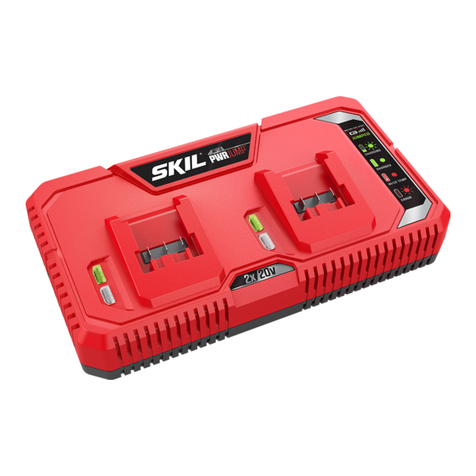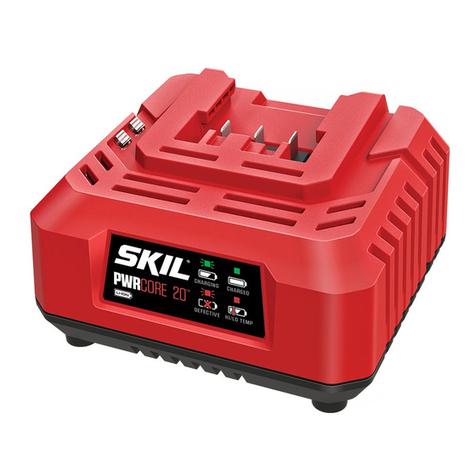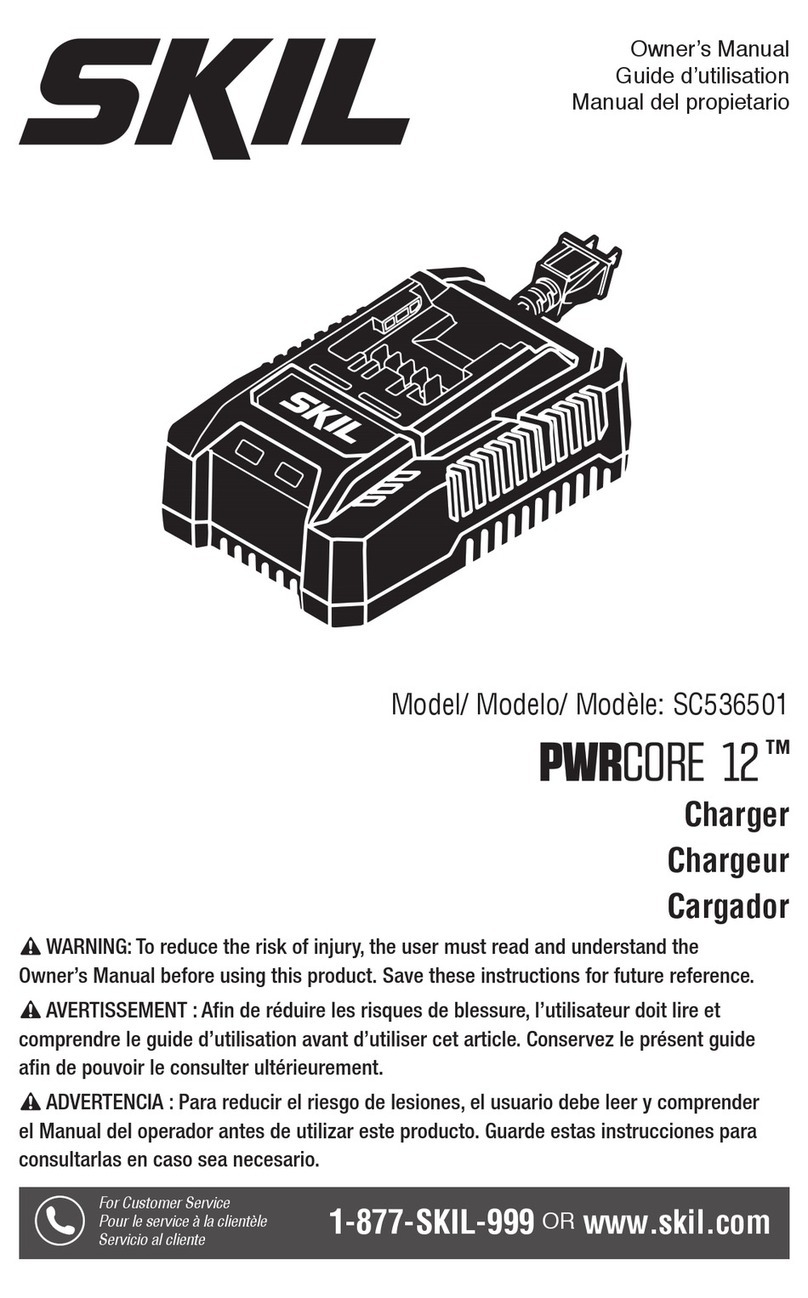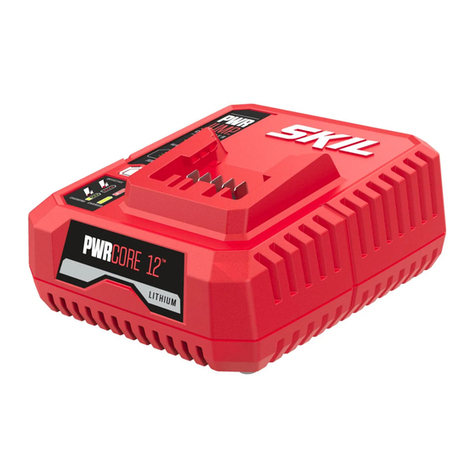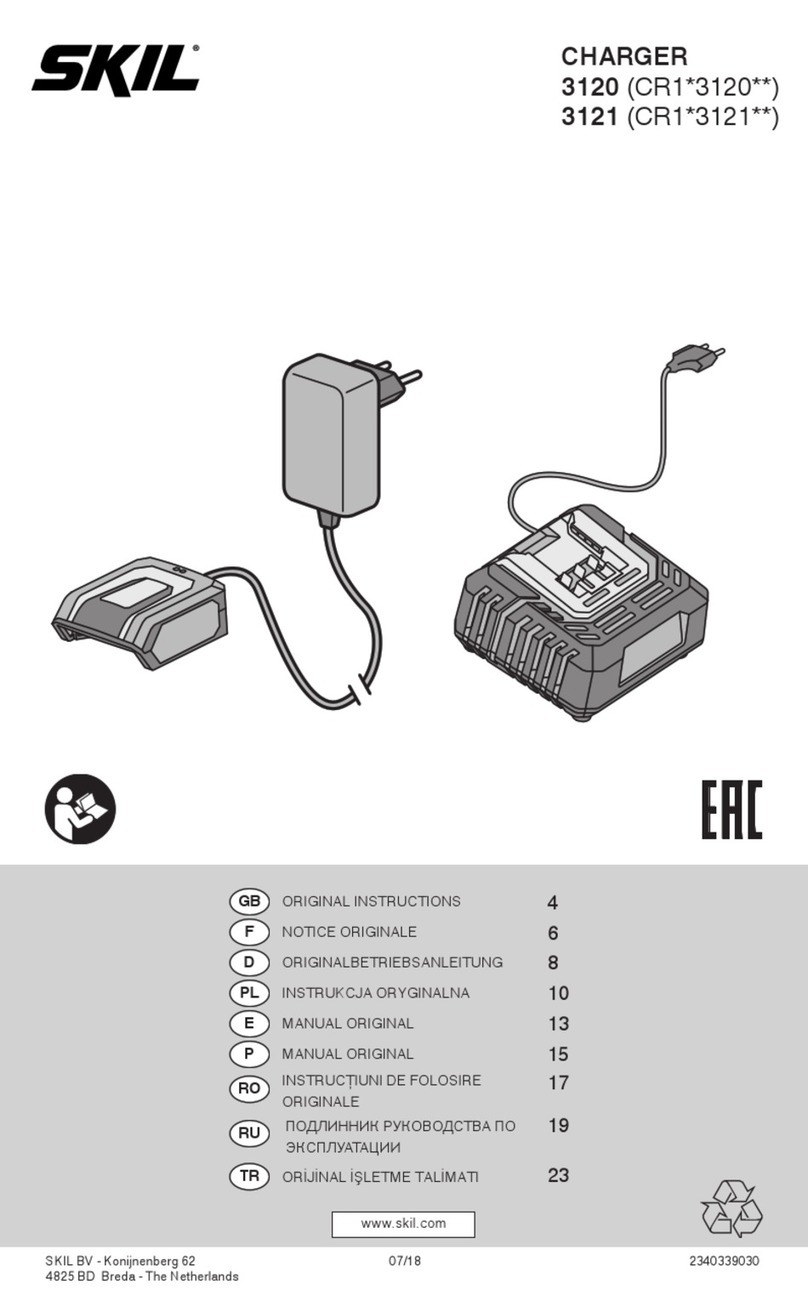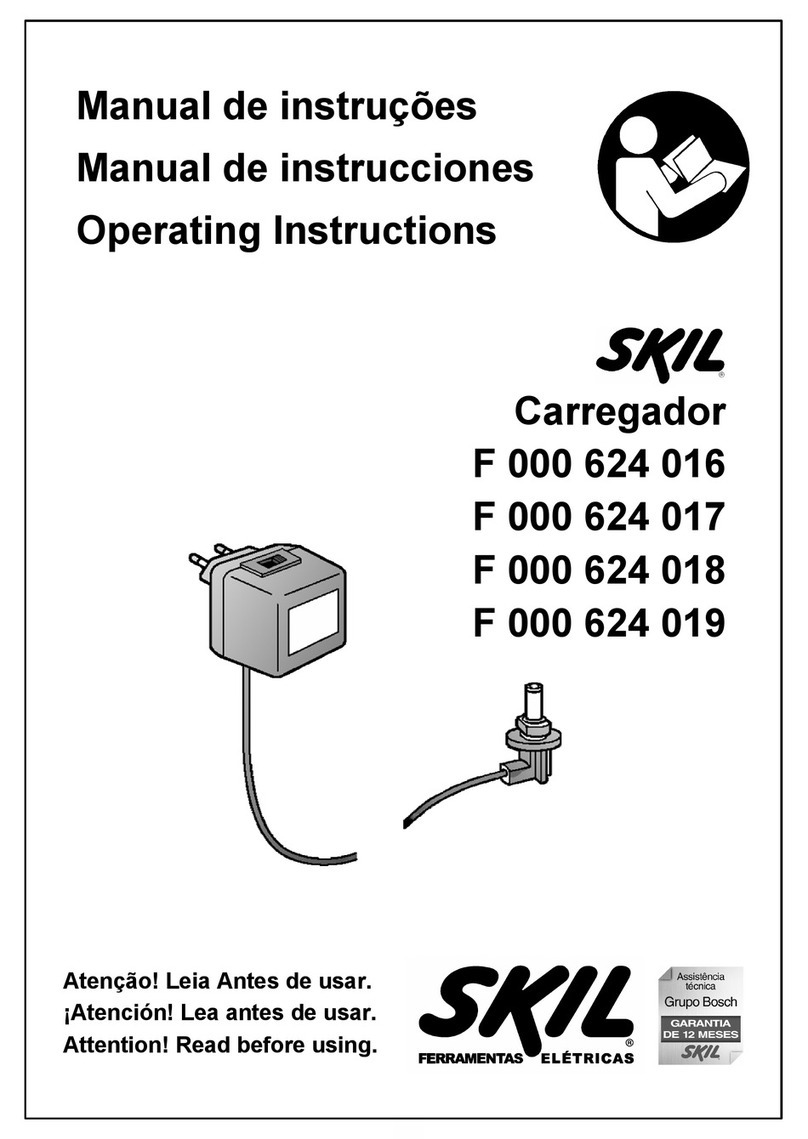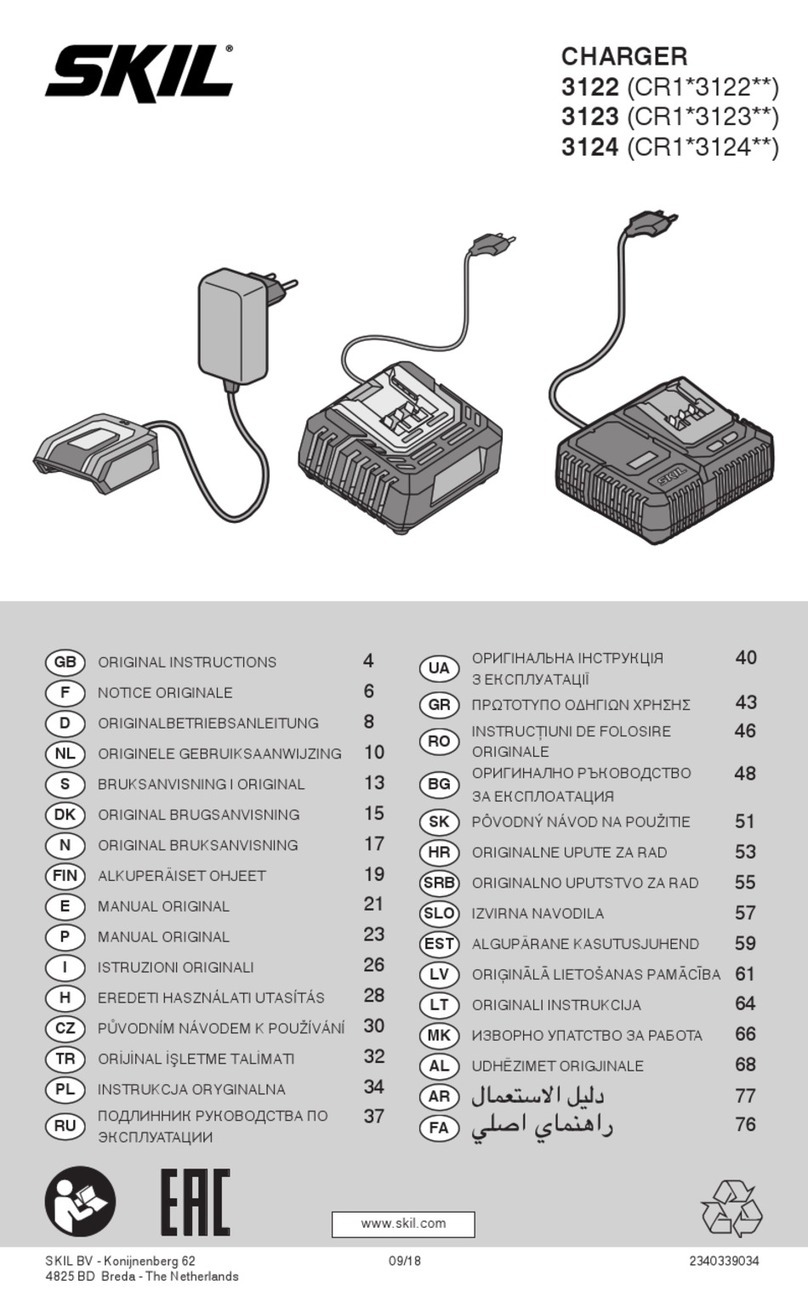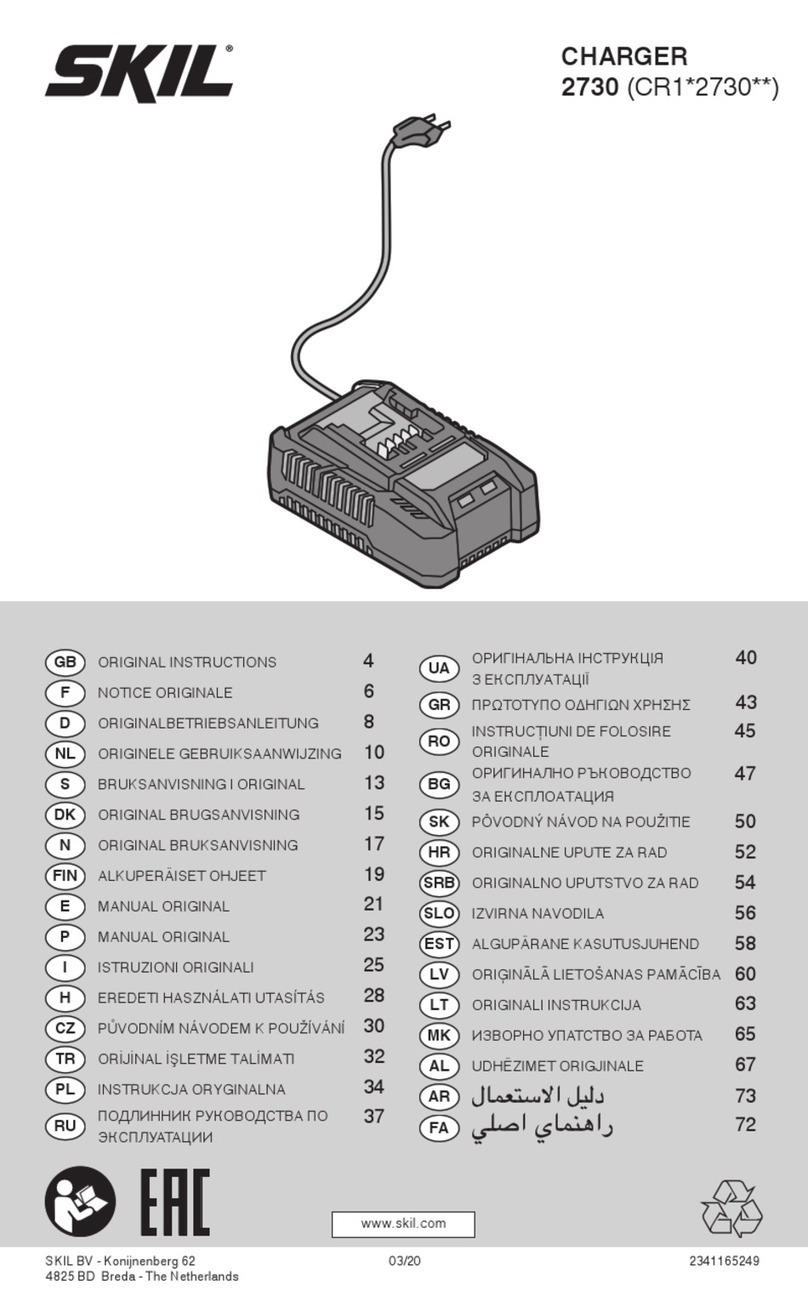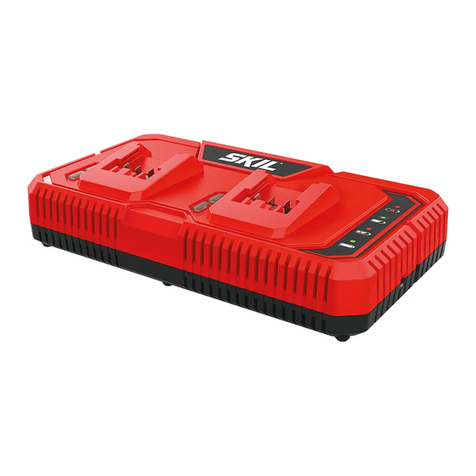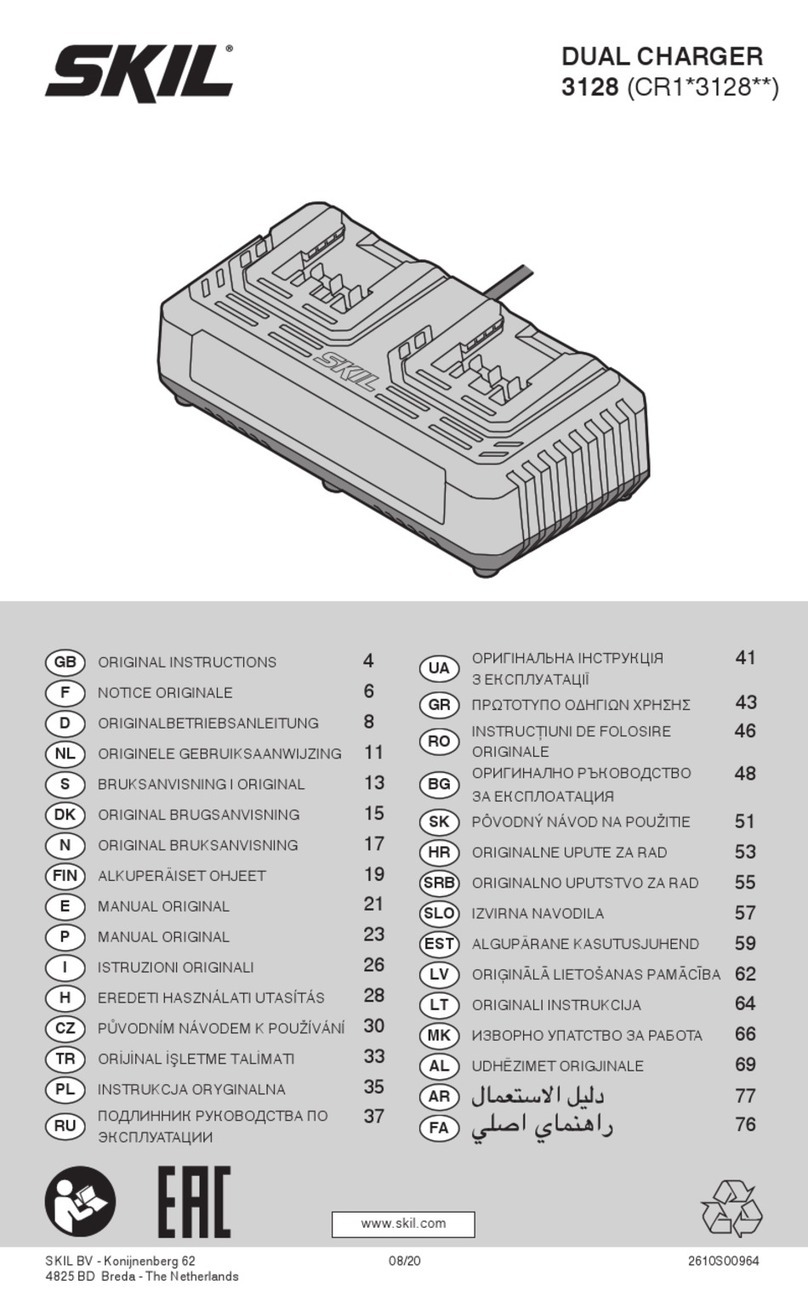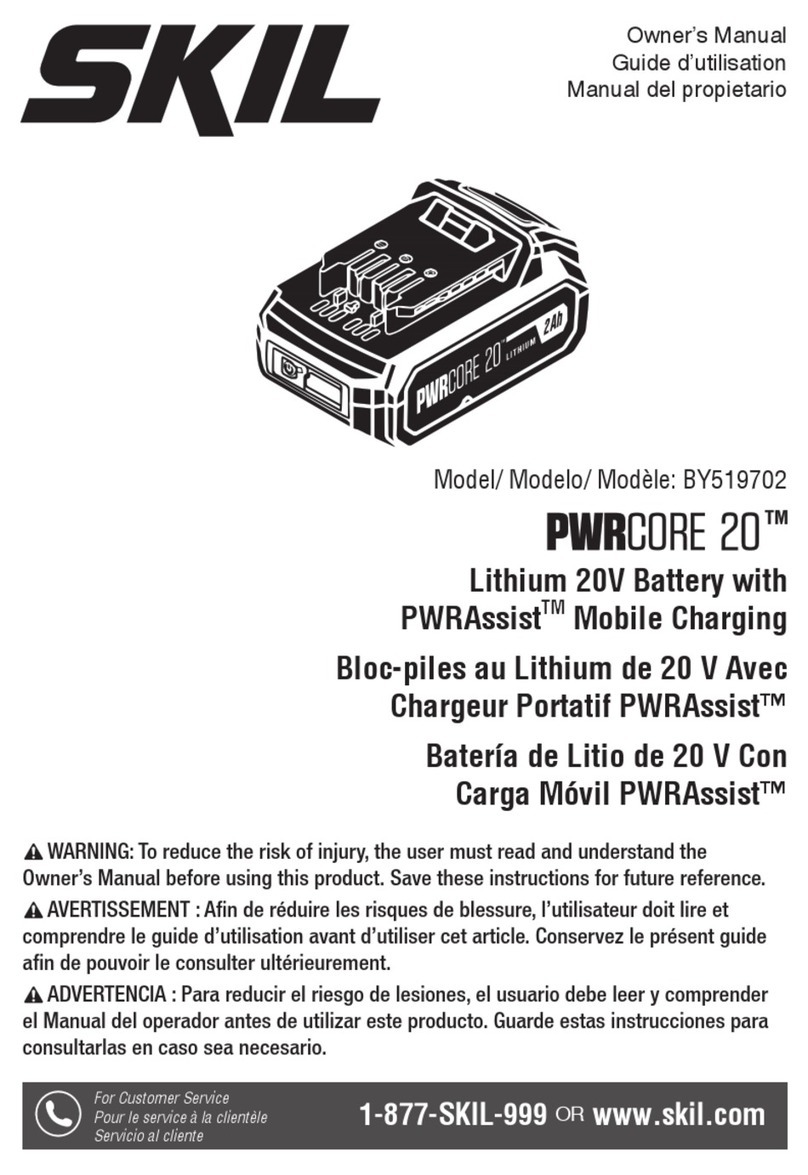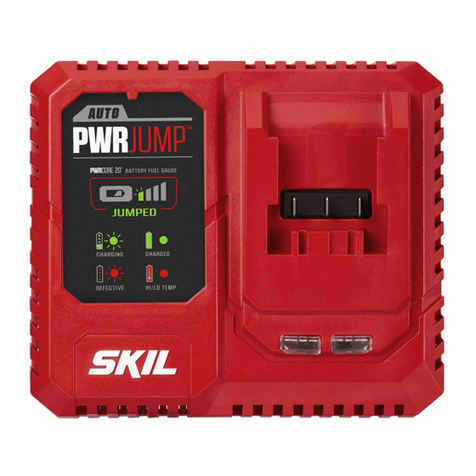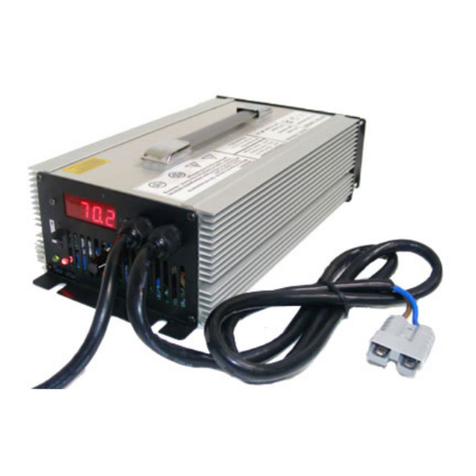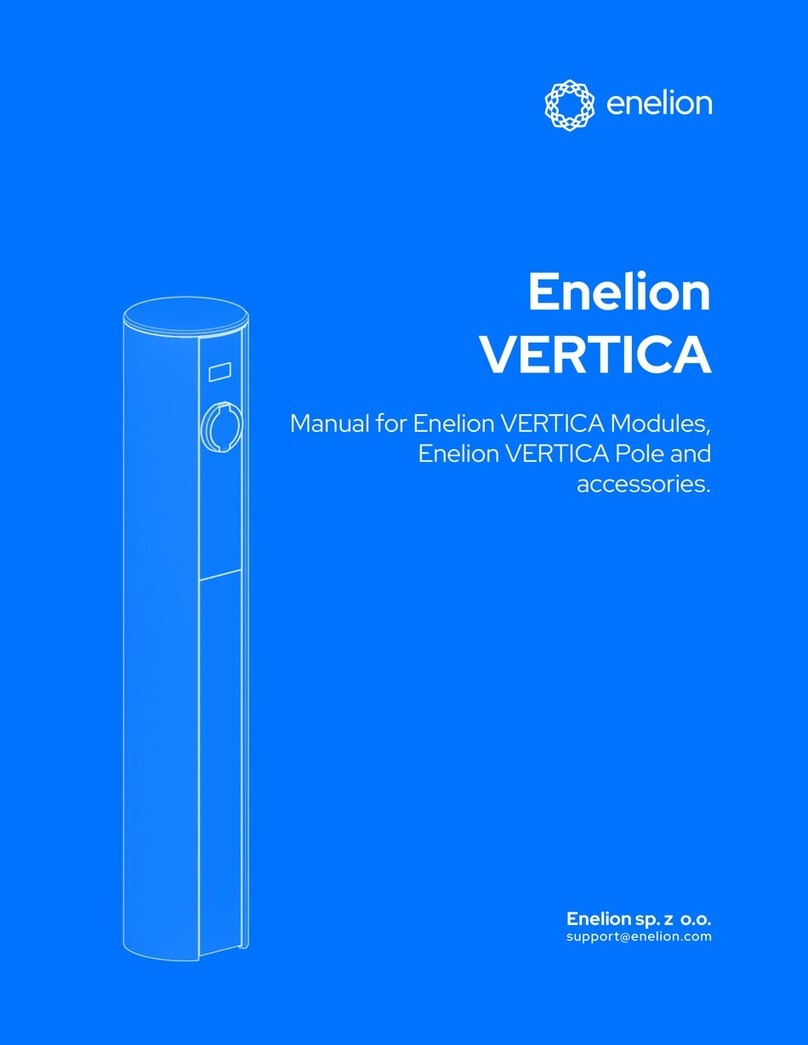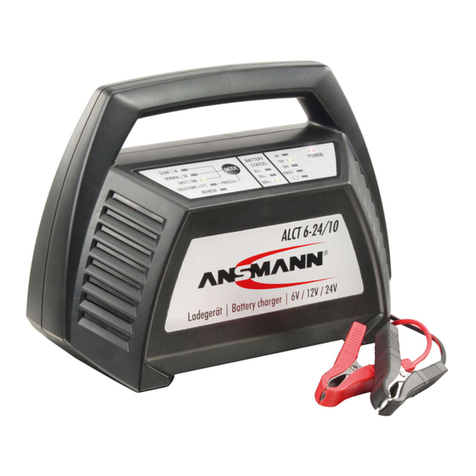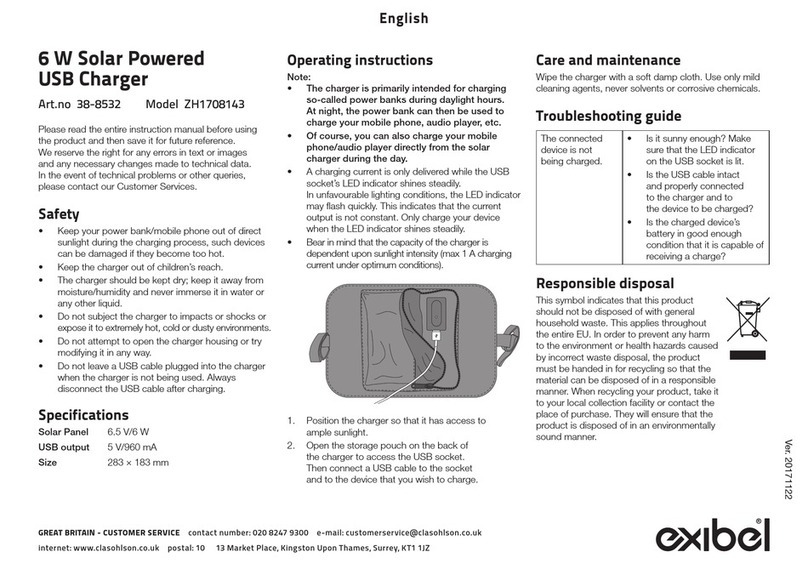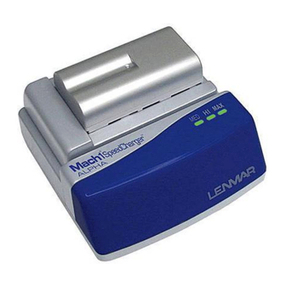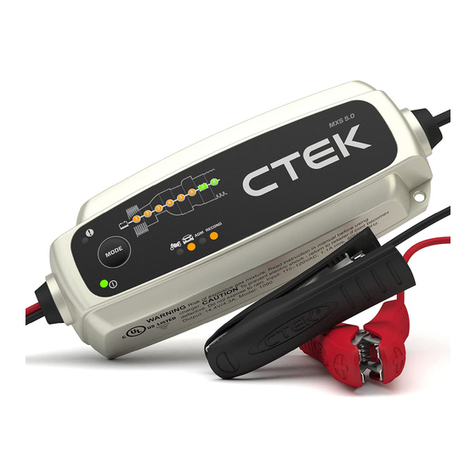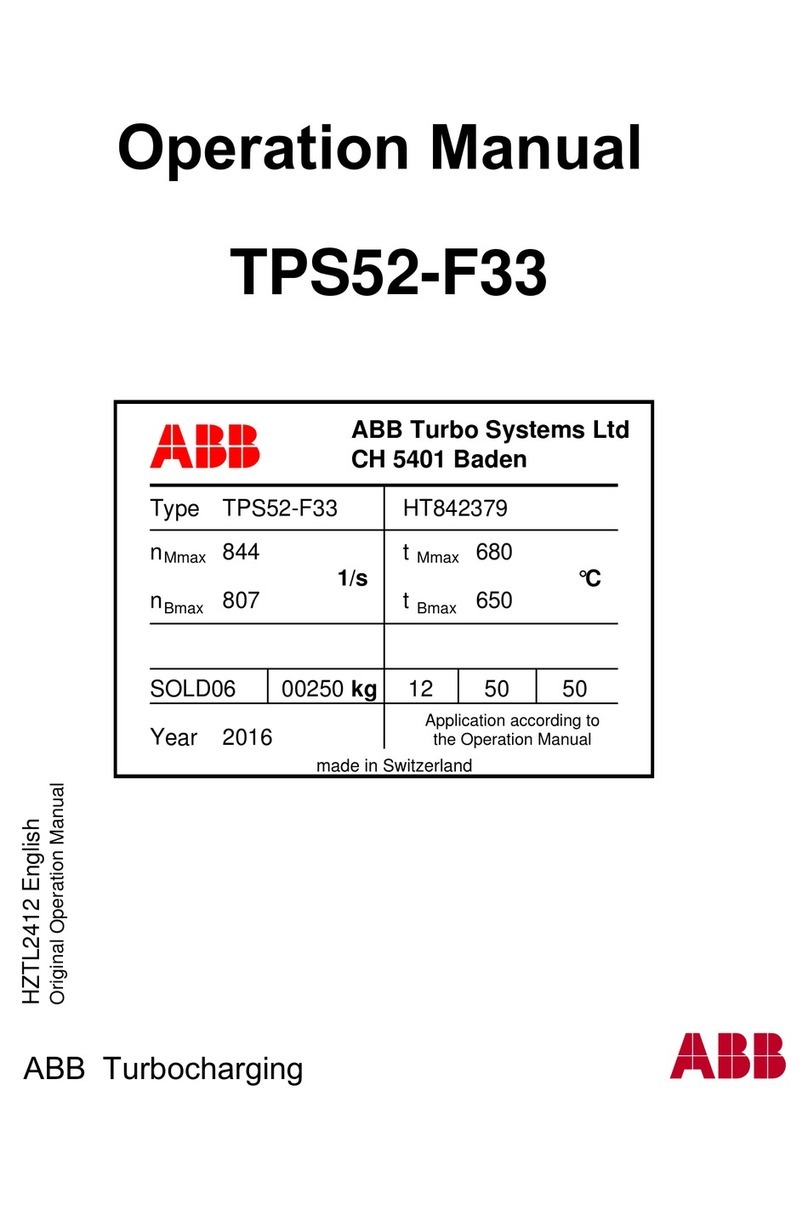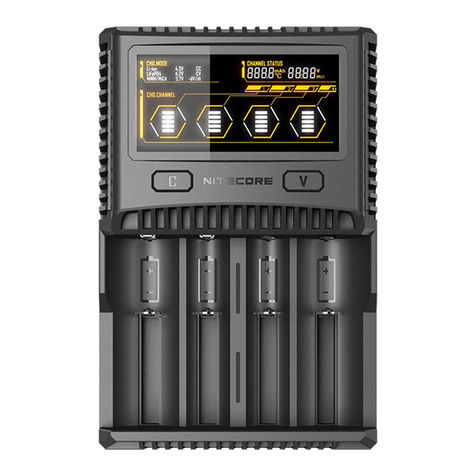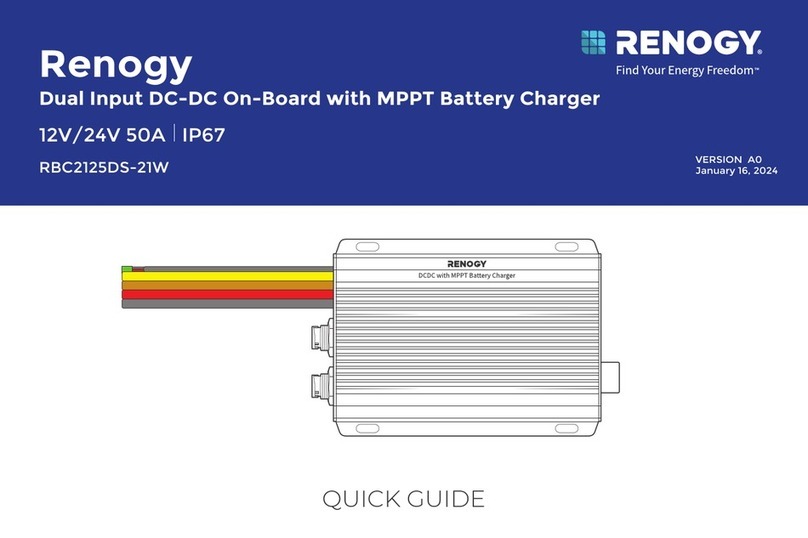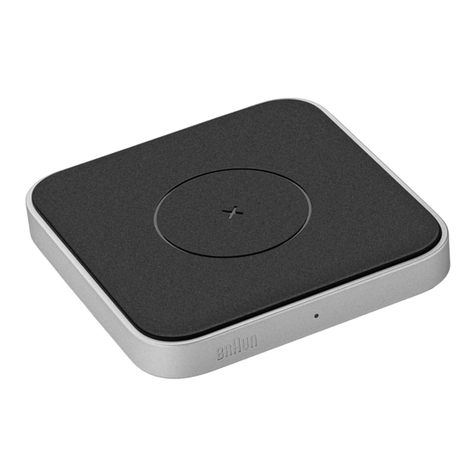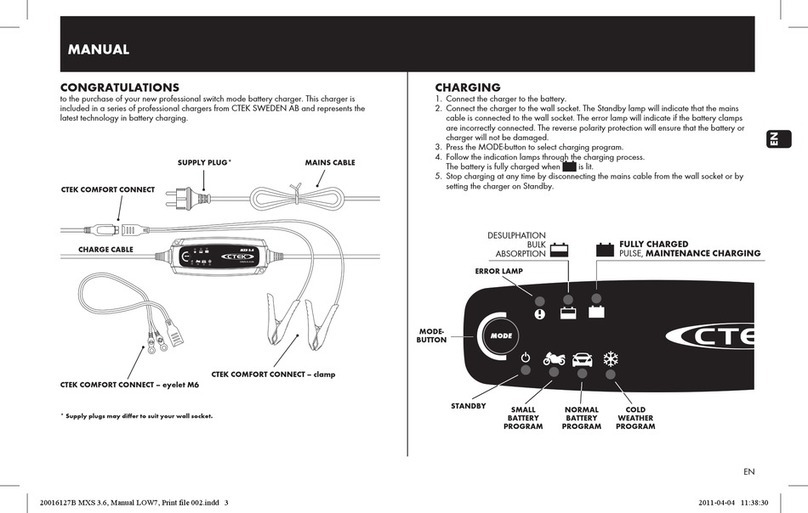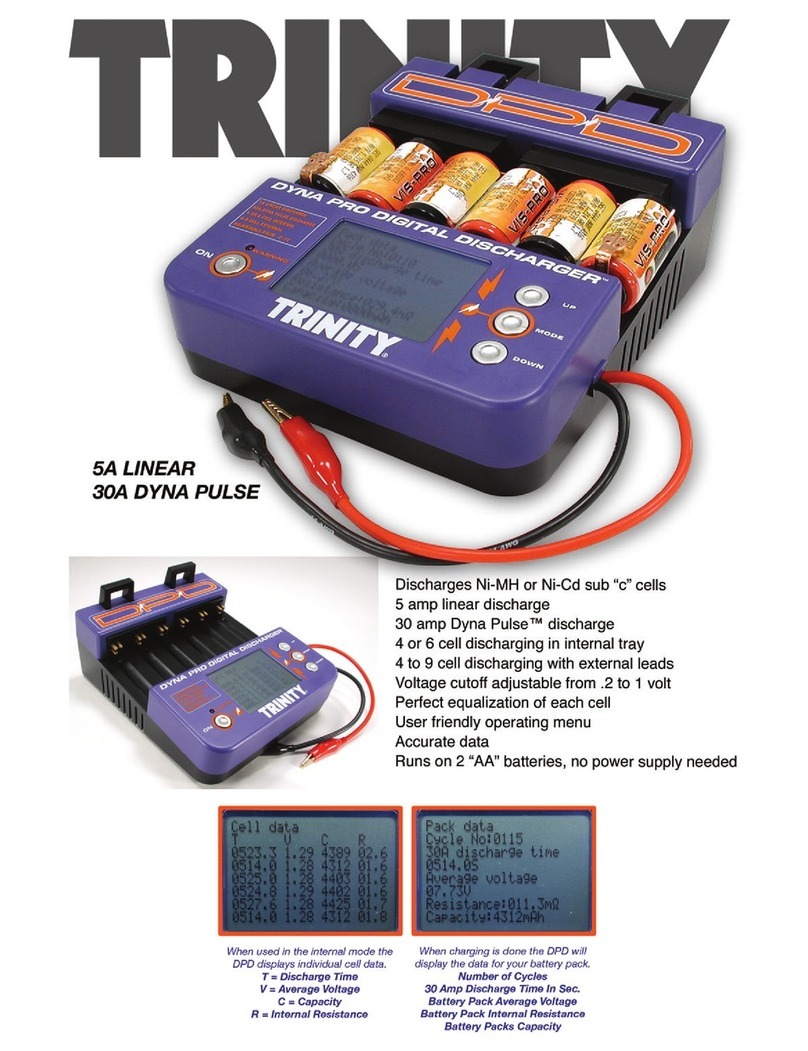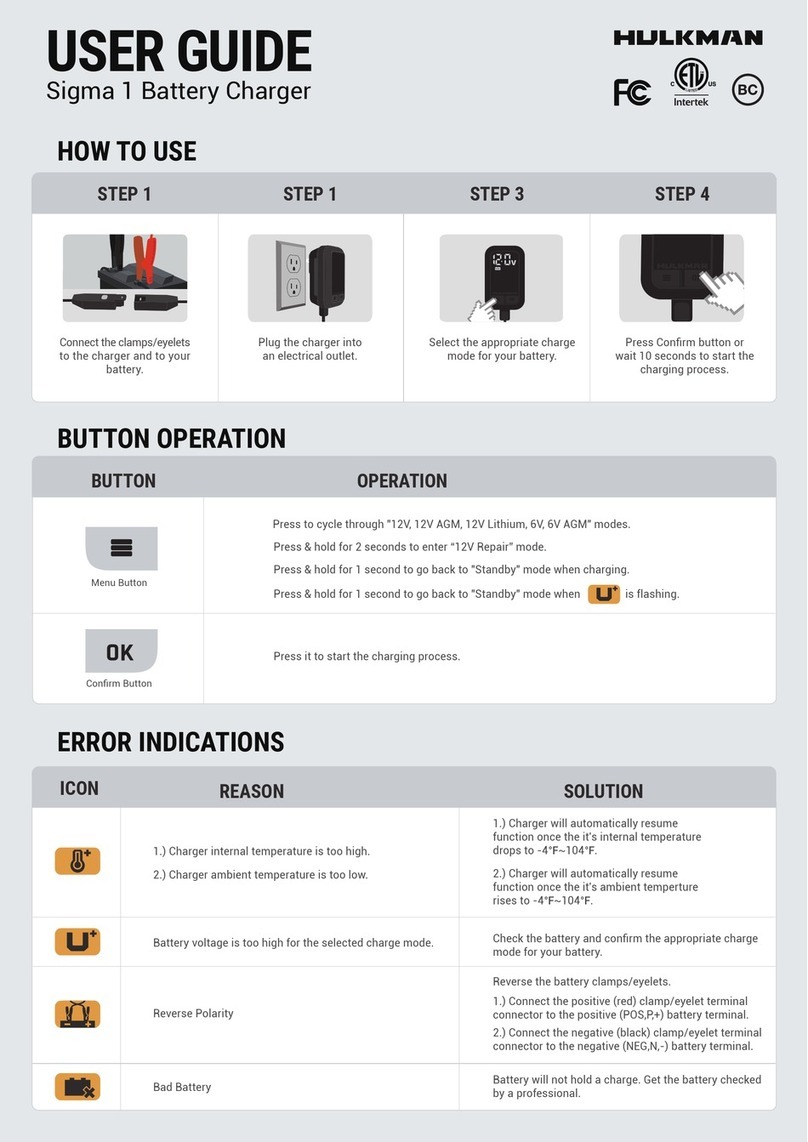
3
READ ALL INSTRUCTIONS THOROUGHLY
SAFETY RULES FOR CHARGER
IMPORTANT SAFETY INSTRUCTIONS
This manual contains important safety and operating instructions for battery charger Model
SC5364-00.
Before using battery charger, read all instructions and cautionary markings on battery charger,
battery and product using battery.
CAUTION To reduce risk of injury charge only those lithium-ion rechargeable
batteries specically listed in the manual. Other types of batteries
may burst, causing personal injury and damage.
Do not use the charger outdoors or expose it to wet or damp conditions. Water entering
the charger will increase the risk of electric shock.
Do not handle charger, including the charger plug and charger terminals with wet
hands.
Use of an attachment not recommended or sold by the battery-charger manufacturer
may result in a risk of re, electric shock, or injury to persons.
Recharge only with the charger specied by the manufacturer. A charger that is suitable
for one type of battery pack may create a risk of re when used with another battery pack.
Do not abuse the cord or charger. Never use the cord to carry the charger. Do not pull the
charger cord to disconnect the plug from a receptacle. Damage to the cord or charger could
occur and create an electric shock hazard. Replace damaged cords immediately.
Make sure that the cord is located so that it will not be stepped on, tripped over, come
in contact with sharp edges or moving parts, or otherwise be subjected to damage or
stress. This will reduce the risk of accidental falls, which could cause injury and damage to
the cord, which could then result in electric shock.
Do not operate the charger with a damaged cord or plug, which could cause shorting
and electric shock. If damaged, have the charger repaired or replaced by an authorized
service technician at a SKIL Service Center.
Keep the cord and charger from heat to prevent damage to housing or internal parts.
Do not allow gasoline, oils, petroleum-based products, etc. to come in contact with
plastic parts. These materials contain chemicals that can damage, weaken, or destroy
plastic.
Do not operate the charger if it has received a sharp blow, been dropped, or has
otherwise been damaged in any way. Take it to an authorized service technician for an
electrical check to determine if the charger is in good working order.
Do not disassemble the charger. Take it to an authorized service technician when service or
repair is required. Incorrect reassembly may result in a risk of electric shock or re.
Unplug the charger from the electrical outlet before attempting any maintenance or
cleaning to reduce the risk of electric shock.
Disconnect charger from the power supply when not in use. This will reduce the risk of
electric shock or damage to the charger if metal items should fall into the opening. It will also
help prevent damage to the charger during a power surge.
Risk of electric shock. Do not touch the uninsulated portion of output connector or
uninsulated battery terminal.
Save these instructions. Refer to them frequently and use them to instruct others who may
use this tool. If you lend this tool to someone else, also lend these instructions to them to
prevent misuse of the product and possible injury.
